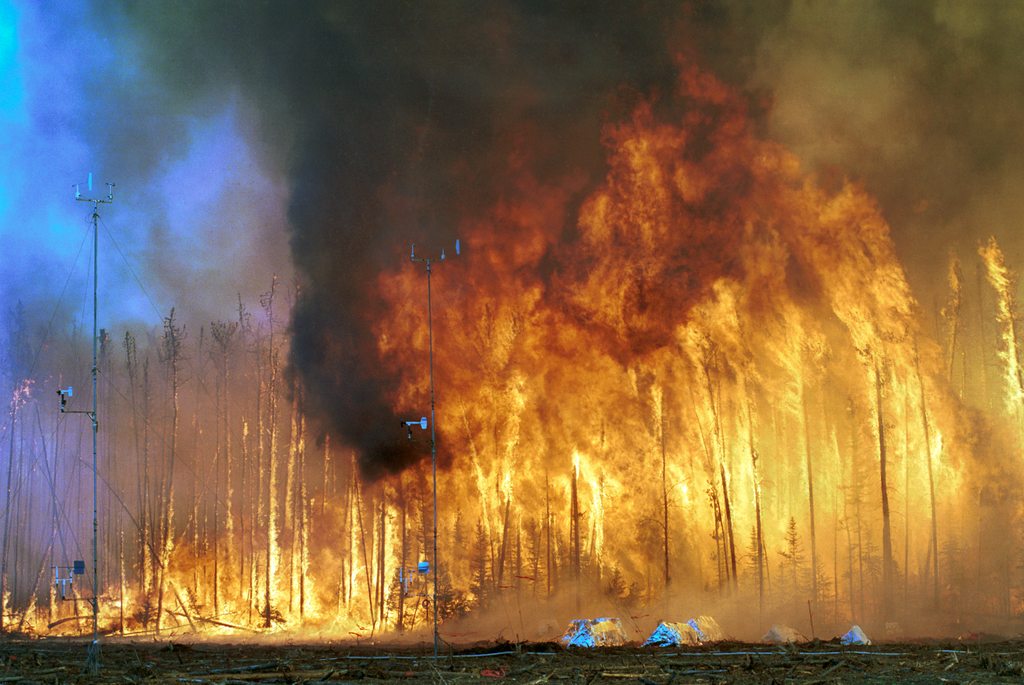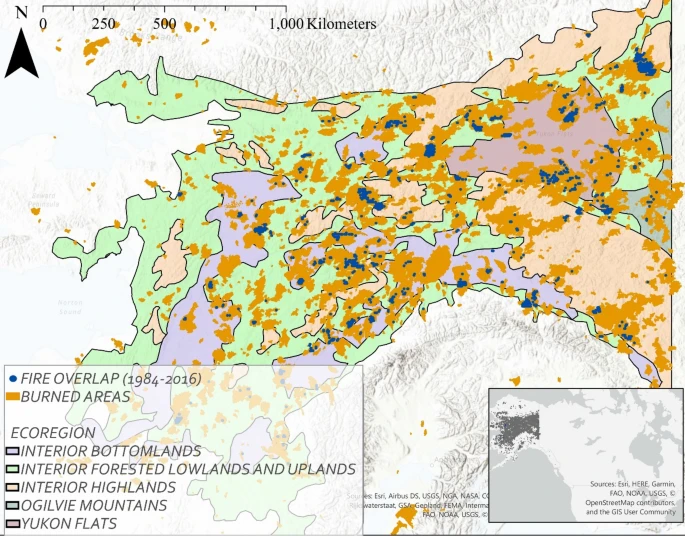More wildfires in sub-arctic forests heat up our Earth

Burned forests usually resist new fires for many years. A warming Arctic is making fires more frequent and carbon emissions higher

by Buma et al., 22/03/2022 in Scientific Reports
Climate drivers are increasingly creating conditions conducive to higher frequency fires. In the coniferous boreal forest, the world’s largest terrestrial biome, fires are historically common but relatively infrequent. Post-fire, regenerating forests are generally resistant to burning (strong fire self-regulation), favoring millennial coniferous resilience. However, short intervals between fires are associated with rapid, threshold-like losses of resilience and changes to broadleaf or shrub communities, impacting carbon content, habitat, and other ecosystem services.
Read the complete article…..
Featured Image: (Photograph used by permission of the USDA Forest Service.) – Bunk S: World on Fire. PLoS Biol 2/2/2004: e54. doi:10.1371/journal.pbio.0020054.g001 / Permission details: This file was published in a Public Library of Science journal. Their website states CC BY 2.5 / File:Northwest Crown Fire Experiment.png / Created: Published: 17 February 2004